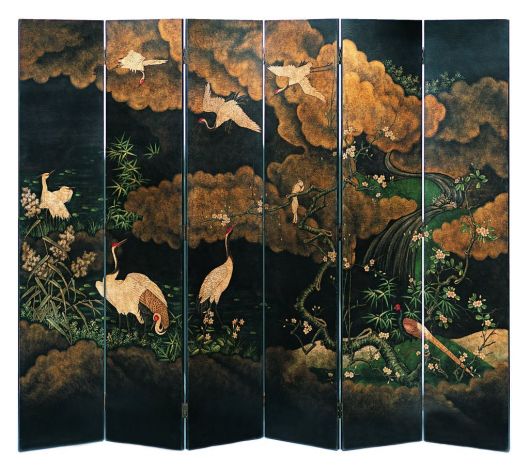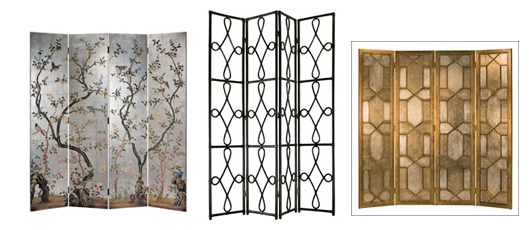Tags
antique, antiqued, arts and crafts, China, Décor, dressing screen, folding screen, furniture, furniture history, gold leaf, handcrafted decor, history, imported furniture, imports, interior design, Japan, Jesuit, missionaries, room divider, screen, shoji
 – Antiqued Crackled Black Japanese 6-Panel Shoji Folding Screen –
– Antiqued Crackled Black Japanese 6-Panel Shoji Folding Screen –
Used to cover everything from unsightly kitchen doors to aristocrats changing clothes, screens and room dividers have been around since China’s Zhou Dynasty, 771-256 BCE. The Han Dynasty, 206 BCE – 220 CE, saw the advent of shoji, or folding screens. Ancient trade routes ensured the invention’s journey to East Asia and throughout Europe. Today, manufacturers and distributors like MBW Furniture offer interior designers a vast selection of room dividers from many cultures and time periods.
Highly ornate and lavishly aesthetic, folding screens tend to be hinged masterpieces that feature beautiful art: scenes of palace life, elements of nature, mythological themes, and motifs that inspire romance as well as intrigue. From Chinese classical novels like Dream of the Red Chamber by Cao Xueqin to countless plays from 18th-century England that feature flirtations, botched rendezvous, and romantic hijinks involving folding screens, literature from all over the world adds romance and mystery to the screen’s lore.
Initially serving as room partitions, Chinese folding screens were dense wooden structures with cloth or leather hinges. These massive frames did not move often. Japanese folding screens were much more versatile. They were often used in tea ceremonies, theatrical venues like concerts, outdoor processions, and Buddhist rites.
 Silver Leaf Shoji – Art Deco 4-panel Screen – Antiqued Geometric Shoji
Silver Leaf Shoji – Art Deco 4-panel Screen – Antiqued Geometric Shoji
Unlike the heavy Chinese screens, the lightweight Japanese counterparts were mobile and available in different sizes depending upon intended function. For instance, smaller, 2-fold screens were for tea ceremonies, and larger, 8-fold gold-leaf screens functioned as backdrops for dances. Artisans create folding screens by covering a stable, wooden lattice with many layers of paper and applying it in a specific order and manner. For the more flexible versions like those of Japanese origin, manufacturers integrate a system of strong paper “hinges” within the panel’s construction.
Western traders from Portugal arrived in Malacca in 1543 and became particularly interested in the folding screen. Europeans like the Jesuit missionaries began adapting the screens, but it was not until the 19th Century that Japanese folding screens reached their current level of exposure and popularity in the West. The American government sponsored Commodore Perry’s 1853 trip to Japan in an effort to increase trade and relations between the East and West. The effort was not in vain. The 1867 International Exhibition of Industry and Art in Paris boasted many European-owned collections from the East as well as fresh folding screens of European design.